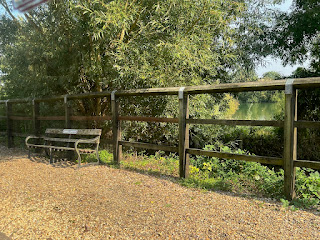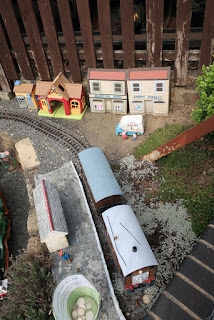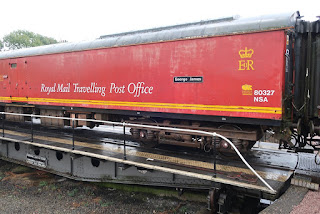The Nene Valley Railway
The NVR is a delightful railway, running from Peterborough in the east to Yarwell in the west. It is 7 1/2 miles long, with stations at Wansford, Overton (for Ferry Meadows), and Orton Mere, and as one of her "significant birthday" gifts from dear friends last year, Wendy was presented with a voucher to enjoy a day out on the railway.
One beautiful Saturday morning, we drove to Wansford Station, which is the headquarters of the Nene Valley Railway; we left our modern transport in the car park and set off to enjoy the delights of steam, provided by a Danish locomotive, affectionately named "Tinkerbell!" Our tickets allowed us to chuff up and down the line throughout the day, and it was a wonderful experience. We were lucky with the weather, too - mostly treated to bright sunshine, at one point the clouds opened for a squally bout of rain, but they cleared away and the sun soon returned to shine on the railway.
The NeneValley Railway has also played host to several films, including a couple of James Bond movies: in 1983, Roger Moore took the lead in Octopussy, co-starring Maud Adams, and in 1995, with Pierce Brosnan in the role, in GoldenEye. The NVR has also featured in many other films and TV shows, such a Biggles: Alternative Adventures in Time in 1986, Secret Army, Agatha Christie's Hercule Poirot has also featured on the line.
In 1972, British Rail closed the line completely, but a core that would become the Nene Valley Railway had already been formed. In 1968, Richard Patten, a local clergyman, purchased a Class 5 steam loco for scrap value. Originally intended for display, it was in such good condition, it managed to travel from Manchester to Peterborough under its own steam. The decision was taken to restore the engine and to get it into full working order. It was only 14 years old at that time, and the Peterborough Locomotive Society was formed to achieve this.
Wansford was chosen as the main base on the line; in 1975, a shuttle service operated through Wansford Tunnel, the longest on a preserved line in the UK. Upgrading the rest of the line for passenger traffic as far as Orton Mere Station lasted until May 1977 and the arrival of locomotives from Britain, Denmark and France, along with sufficient carriages, meant that on 4th June 1977, the Nene Valley Railway could open its own public services.































.jpeg)

.jpeg)